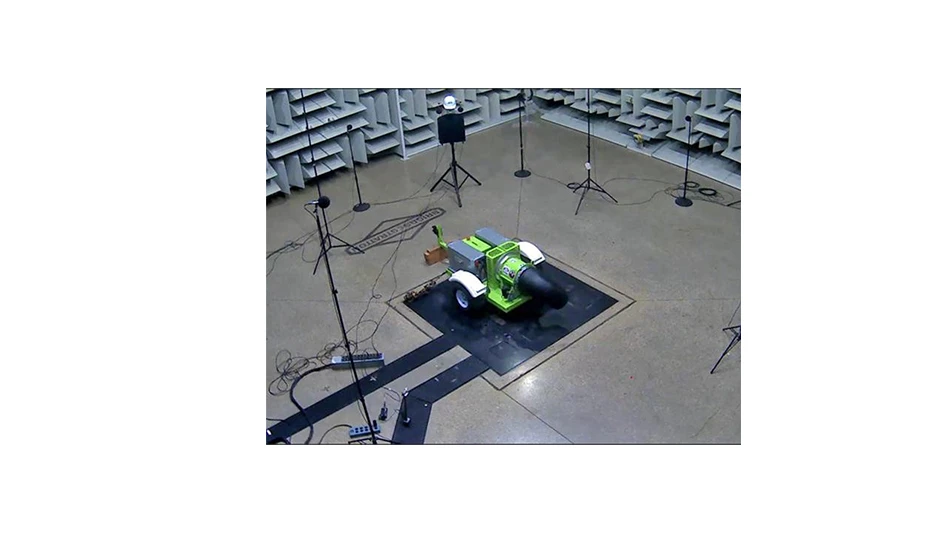 Ryan Baldwin will never forget the summer of 2010. His course, Highland Golf and Country Club in Indianapolis, Ind., experienced a stretch of extreme heat and precipitation in June. More than 16 inches of rainfall accompanied temperatures in the upper 90s. The course was saturated beyond the point where most fungicides could be absorbed and utilized properly by the plant. Contact fungicides had difficulty adhering to tissue, and lasted a few days at best. But plant growth regulators (PGRs) came to the rescue.
Ryan Baldwin will never forget the summer of 2010. His course, Highland Golf and Country Club in Indianapolis, Ind., experienced a stretch of extreme heat and precipitation in June. More than 16 inches of rainfall accompanied temperatures in the upper 90s. The course was saturated beyond the point where most fungicides could be absorbed and utilized properly by the plant. Contact fungicides had difficulty adhering to tissue, and lasted a few days at best. But plant growth regulators (PGRs) came to the rescue.
“On the areas of the course we kept a relatively regular regime of PGR in the mix, the plant survival improvement was noticeable and dramatic,” says Baldwin, CGCS/facilities maintenance director. “Once the rainfall stopped, we still had a long summer ahead with much-weakened plants; and the PGR-treated areas handled the remaining seasonal stresses.”
Baldwin says his use of PGRs is multifaceted, with the primary role being to suppress top growth. This need is a season-long top priority to his selection and implementation of PGRs. Primo is his primary choice, and rates are adjusted along with windows of application, determined by factors such as weather, growth, fertility timing and member event schedules.
During specific times of the year, or under specific weather conditions, PGRs can take on secondary roles within Baldwin’s program. For instance, Proxy is added to the mix on greens/tees during Poa seeding windows, and Primo is replaced briefly by Cutless on fairways during this same set of conditions. However, Primo is the primary PGR in play the vast majority of seasonal time.
Due to a severe DMI resistance to dollar spot, Baldwin relies heavily on contact fungicides such as chlorothalonil. To him, it’s a logical assertion that by suppressing top growth and clipping production, the contact fungicide will remain at higher concentrations during the effective window.
“The combined plant health benefits and fungicide longevity have definitely improved my disease control,” Baldwin says. “I can’t say that my intervals have changed much since introduction of PGRs, but there is no doubt the efficacy of the fungicide and the plant health provides much less breakthrough towards the end of each interval. I’m fully convinced their use is synergistic for the plants and the combined improvements in plant health and fungicide efficacy lead to a better, healthier surface for my members.”
Bob Senseman, CGCS, from Oswego Lake County Club in Lake Oswego, Ore., uses PGRs combined with Proxy in the spring for seedhead suppression. By doing so, he says, he’s making the plant stronger and hopes to suppress disease development.
In an interesting twist, Senseman says he and an increasing number of superintendents who use Primo on greens are starting to curtail that use till after June due to an increase in anthracnose. However, he admits that science doesn’t support that PGRs actually stimulate anthracnose development – and Dr. Jim Murphy of Rutger University’s Department of Plant Biology & Pathology confirms that.
“A lot of superintendents were worried that Primo would be making the disease worse because that’s the most common summertime plant growth regulator used, but we just didn’t see that to be the case,” says Murphy. “Our research led us to believe that superintendents are better off staying with their plant growth regulation program in summer.”
Murphy and his team looked specifically at scenarios where superintendents had a lot of Poa annua on their greens and were trying to keep it alive and healthy. They did not look at Cutlass or Trimmit because those PGRs are generally used to get rid of Poa annua.
“Rarely did we see a negative effect or enhancing the disease,” Murphy says. “We usually saw not much of an effect if at all, and when there was an effect, more often than it being negative, it was actually positive. But the positive aspect was not so strong that I’m confident superintendents should use it for that purpose and expect something out of it. When you looked at how many times we had a positive versus how many times we had a negative, the positive effects outweighed the negative effects by quite a lot.”
Murphy’s standard advice to superintendents when it comes to Primo and anthracnose is that they might see a positive impact on reducing the disease – but don’t count on it. Also, don’t be afraid to use it because there isn’t much of a negative effect at all.

“I would rather have the growth regulating effects you’re using that product for and not worry about any disease increase because it’s probably not going to happen,” he says.
When it comes to dollar spot control, Mark Brotherton, turf and ornamental product manager with SePRO Corporation, says superintendents have told him of the side benefit of suppression of this disease when using Cutlass or Trimmit – most likely because both products were originally screened as DMI fungicides. Still, he admits it’s hit or miss.
“I would not be using a PGR as a substitute for a fungicide, not even to the point of complementing a fungicide,” says Brotherton. “While it may suppress dollar spot, it won’t stop it from appearing or affecting turf. But it will reduce the amount or severity of it. I would suspect the university folks would say the same thing. They’re not curative by any means or even preventative – they’re suppressive. It’s not going to be whether you see it or don’t see it, it’s the magnitude at which you do see these outbreaks. You either have to have treated/untreated areas with PGRs or treated/untreated areas with fungicides. Basically, you have to something to compare it to.”
Gabe Menna of Centre Hills Golf Club in State College, Pa., is one superintendents who saw a reduction in dollar spot – specifically, 20 percent less in the plot where he applied Musketeer. He applied a mid-rate of Cutless, Legacy, Trimmit and Musketeer on his nursery green (75 percent bentgrass, 25 percent Poa annua) every three weeks during a high-pressure dollar spot season. Menna wasn’t even looking to suppress dollar spot, but found it was a side benefit.
“The main thing we were searching for was growth regulation since we have such little Poa in our fairways,” says Menna. “We looked often and didn’t see much difference in any category we were searching for. We had a rep in town and was showing him our testing plots on our fairway nursery, and he didn’t notice much either but he pointed out that the dollar spot was less in the Musketeer. It still had dollar spot, but it had less than the other areas. We didn’t take any pictures and didn’t document anything or take any percentages of dollar spot at the time because it wasn’t really what we were concerned with from our test. For me, it was really just seeing if there was any reason to switch from Trimmit, which is working well for us for color and growth regulation.”
Kyle Erdige of Timber Banks Golf Club in Baldwinsville, N.Y., also believes he gets an ancillary benefit of dollar spot suppression when using PGRs – again, Trimmit, as it was originally formulated to be a DMI. But he admits his situation is a little different than other superintendents in that his bentgrass is somewhat resistant to dollar spot. “The varieties of bentgrass I have in my fairways are not 100 percent dollar spot resistant but have done very well in trials as far as not getting dollar spot compared to other bentgrasses on the market,” he says.
The rate Erdige uses his PGRs is a little higher than what most superintendents use but still within the label recommendation. Still, he says he asked a couple researchers if he should be worried about DMI resistance, and they said no. “The rate I’m using isn’t quite as high as a true regular fungicide DMI, so they said I shouldn’t see any resistance from it, and I was glad to hear that,” he says.
Erdige has been using PGRs to keep Poa from encroaching on the turf since 2010, and he plans on keeping with the program.
Jason Stahl is a Cleveland-based writer and frequent GCI contributor.

Explore the January 2014 Issue
Check out more from this issue and find your next story to read.
Latest from Golf Course Industry
- GCSAA announces Grassroots Ambassador Leadership Award recipients
- Reel Turf Techs: David Gummo
- PBI-Gordon promotes two to executive level
- VIDEO: A First Green morning
- Bloom Golf Partners adds HR expert
- Seeking sustainability in Vietnam
- Kerns featured in Envu root diseases webinar
- Toro continues support of National Mayor’s Challenge for Water Conservation





